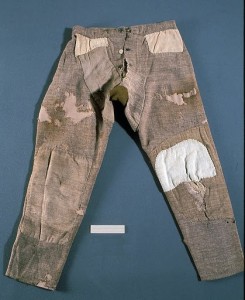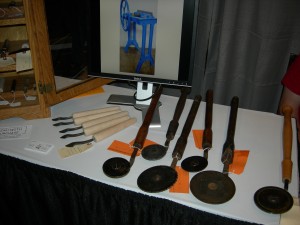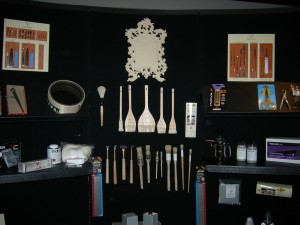At the largest annual meeting of the American Institute for the Conservatiom of Historic and Artistic Works in 20 years, 1100 conservators met in Philadelphia during the first week in June to discuss ethical principles and critical thinking in conservation. Traveling from as far as Japan, they included staff of major museums (the National Gallery of Art, British Museum), conservators in private practice, and many students in training. They compared standards historically, across different types of artifact and from one country to another. The meeting included conservation scientists, who analyze materials of artworks and historical artifacts, and conservators specializing in paintings, archives, books, maps, video art, historical computer hardware, artifacts of contemporary performance art, ethnographic work that retains ceremonial use, architecture, fountains, historical toys and even boats.

At the opening session, philosopher James Janowski received a lively response to his discussion of what to do about the Bamiyan Buddhas destroyed by the Taliban. All of the fragments were recovered and are being cataloged, but an attempt to reconstruct them from the remains would be a long and extremely costly project, and of questionable value. The Buddhas had both religious and historical value; Janowski suggested that their religious value might be restored, but their historical value was irreparably lost. As a model for the decision he suggested Dresden’s Frauenkirche; largely destroyed by Allied bombing during WWII, the remains stood as a ruin for 40 years before the church was restored. He believed the rebuilding successfully revived the church’s iconic, religious importance to Dresden, but was concerned that over time the repairs would become indistinguishable from what remained of the original, distorting the historical record.
In considering Janowski’s example, it may be worth considering that the Japanese have different standards of originality for historic buildings. Since their temples were built of wood, which rots, every piece of the original construction has been replaced, perhaps several times during the history of an old temple. The Japanese accord originality to continuity of function rather than materials. Another possible route for the Bamyian Buddahs is the one taken in Berlin with the Gedächtniskirche, also bombed during WWII. It remains as an eternal ruin. Having lost its religious value, it stands as a sobering memorial of the war.

Deborah Bede, a textile conservator, raised the question of the status of previous repairs to an object; were they part of the historical evidence that should be retained during treatment? These might be repairs done by amateurs as well as those by previous conservators. The context usually directs the decision. Works owned by art museums are valued for their beauty, so unsightly or intrusive earlier repairs would probably be removed (although the Harvard University Art Museums own a self portrait of Van Gogh which the artist had given to his friend Gauguin; the crude repair of a tear was retained when the museum determined that it had been made by Gauguin). A history museum might be more likely to retain repairs, especially if they were performed as part of the artifact’s original use. As example, she showed a pair of farmer’s work pants (above), repaired by his wife to extend their wear. Given the nature of the garment, significant for its history of use rather than aesthetic function or rarity, the home-made patches would surely be retained. In another session Jane Klinger, conservator at the U.S. Holocaust Memorial Museum, raised the problems posed by her museum’s collection, where objects had layers of meaning. As artifacts of trauma, their damage might suggest the romantic interpretation of the objects themselves as victims.

Several sessions addressed conservation questions around digitization of archival and library collections. Works scanned for digitization must be in condition to tolerate a certain amount of handling. Books and bound archives may have folded leaves or be bound through text, so scanning necessitates unbinding; this means loss of the original stitching, although the books themselves will receive less handling once digital copies are available. Staff at the Wilson Library of the University of North Carolina also described the challenge of scale – specifically, the 2 million manuscripts in the Southern Historical Collection that the library is currently digitizing, which has forced a reconsideration of how much treatment each document would receive.
One of the basic tenets of modern conservation is retention of all the remains of the original artifact, and there will always be debates as to how much loss compensation (e.g. filling-in missing areas or replacing missing or damaged parts) is acceptable before an artifact becomes a recreation; this would be unacceptable within modern museum standards, although private collectors may have other desires for treating their badly-damaged objects. I wonder, however, whether the strict retention of the non-working remains of, say, a 19th century music box, doesn’t risk turning it into a relic – important, perhaps, because it was made by the greatest of craftsmen, but no longer able to produce the music that was its raison d’etre. Relics (but not reliquaries) are specifically outside the categories of objects that art museums collect. And what can the non-working carapace of a music box mean to museum visitors?




